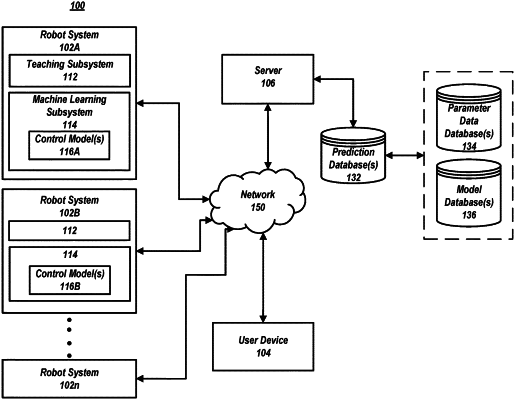| CPC B25J 9/163 (2013.01) [B25J 9/161 (2013.01); B25J 13/086 (2013.01)] | 18 Claims |

|
1. A dynamic mechanical system comprising:
at least one sensor of a first sensor type, each sensor of the first sensor type to sense a first property of the dynamic mechanical system or of an environment of the dynamic mechanical system;
at least a first hardware machine-learning accelerator coupled to a respective output of each of the at least one sensor of the first sensor type, the at least a first hardware machine-learning accelerator comprising an integrated circuit that hardcodes into circuitry a processing of the output of each of the at least one sensor of the first sensor type;
at least one sensor of a second sensor type, each sensor of the second sensor type to sense a second property of the dynamic mechanical system or of an environment of the dynamic mechanical system, wherein the second sensor type is different from the first sensor type and the second property is different from the first property;
at least a second hardware machine-learning accelerator coupled to a respective output of each of the at least one sensor of the second sensor type, the at least a second hardware machine-learning accelerator comprising an integrated circuit that hardcodes into circuitry a processing of the output of each of the at least one sensor of the second sensor type; and
a processor coupled to respective outputs of the at least a first hardware machine-learning accelerator and the at least a second hardware machine-learning accelerator, the processor to execute a control model for controlling the dynamic mechanical system based at least in part on data received by the processor from the at least a first hardware machine-learning accelerator and the at least a second hardware machine-learning accelerator.
|